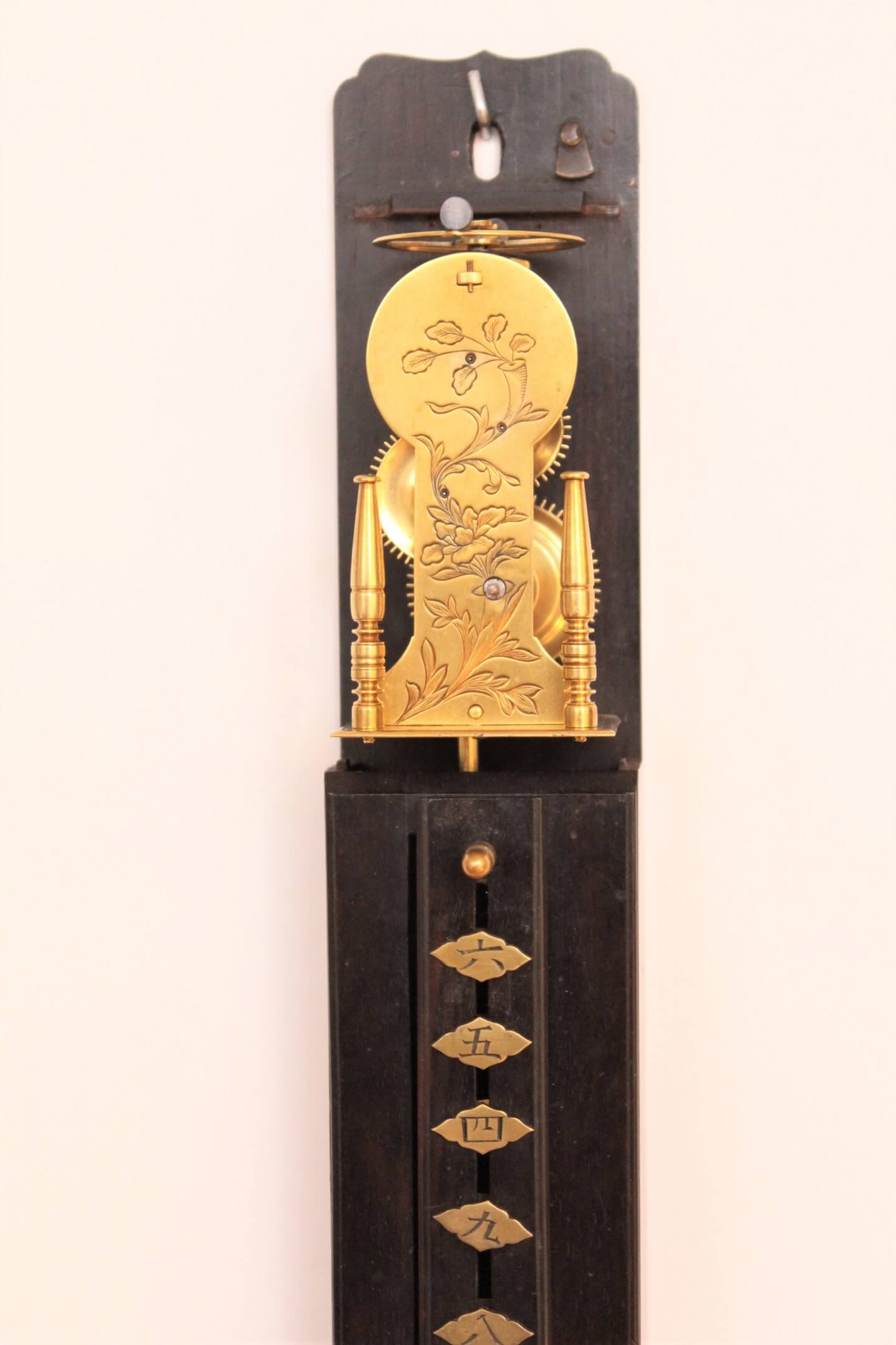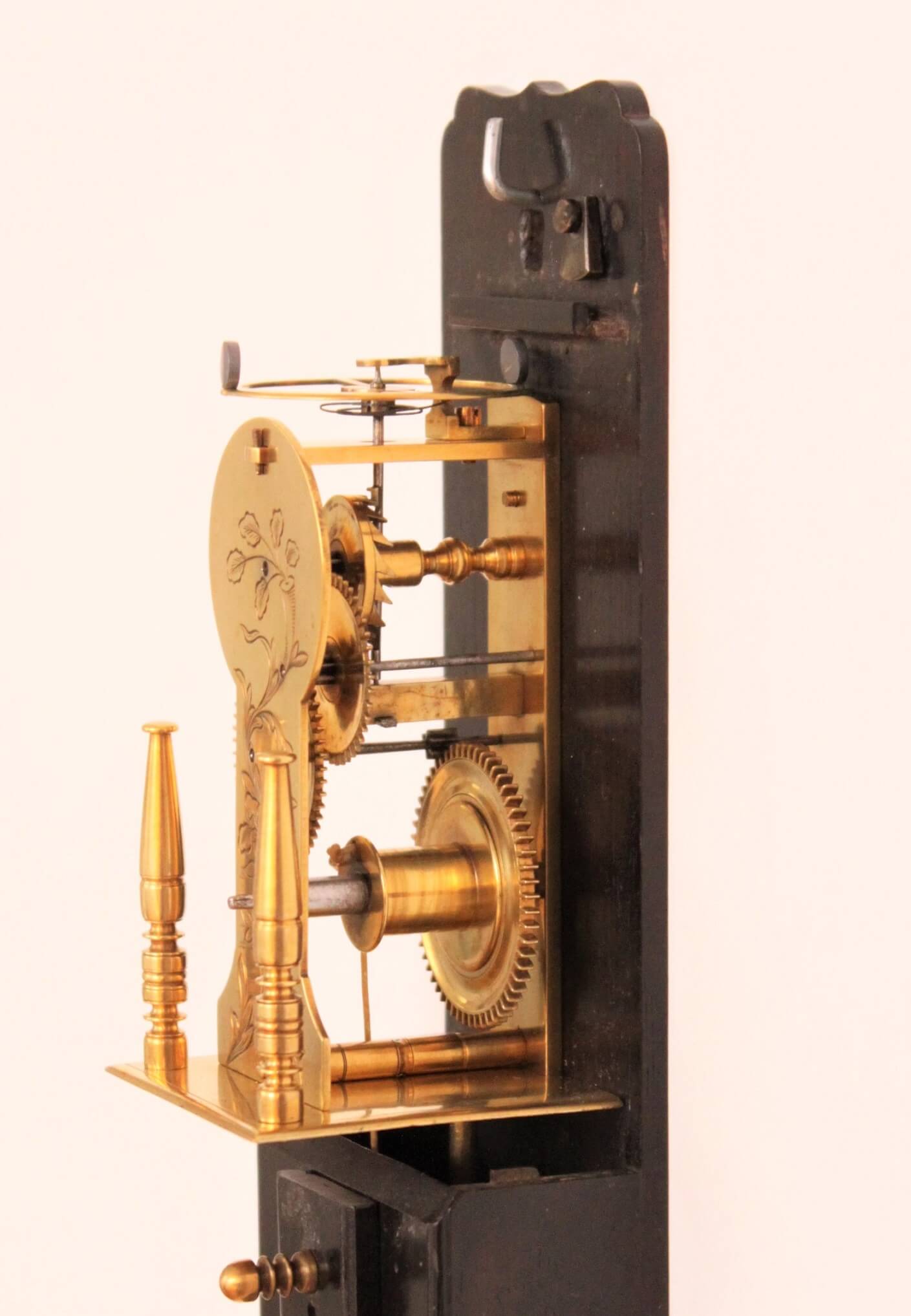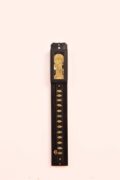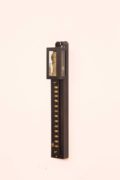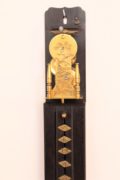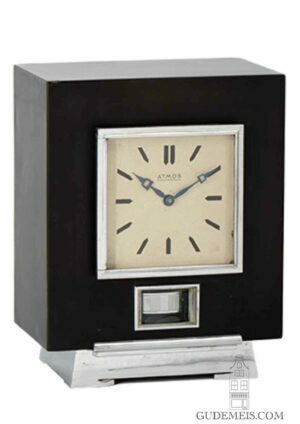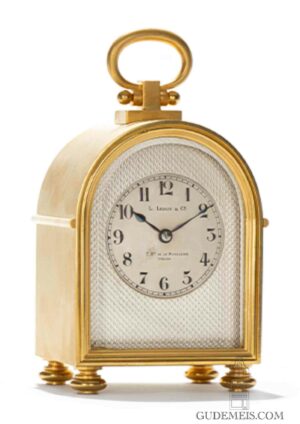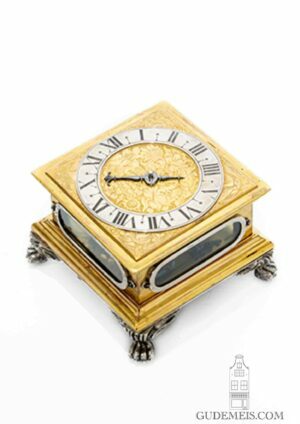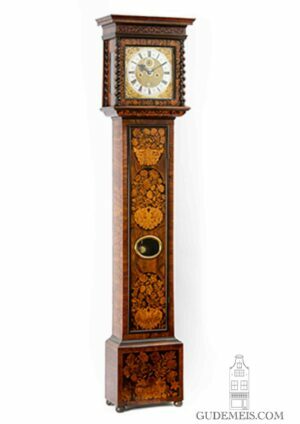A Japanese ebony shaku dokei pillar wall clock, circa 1850
Description
The movement
The brass movement is driven by a weight and has a duration of a day. The visible front plate has a rounded top and is engraved with chrysanthemums and has two turned half columns in front. The rate of the movement is regulated by a plain balance wheel in combination with a verge escapement.
The ebony case
The rectangular ebony case has a glazed hood with fine mouldings revealing the movement. The stem of the case has the adjustable brass ‘toki’, the signs that indicated the time. At the bottom of the stem is a small drawer holding the winding key. The ‘hand’or ‘pointer’ of the clock is attached to the weight. And therefore sliding downward along the toki when the movement runs.
Japanese temporal hours
Until 1868 the Japanese divided daytime and night time into six ‘hours’ each. This meant that with the changing of seasons the length of these temporal hours varied. Day hours in the summertime were longer than the day hours in the winter. To show the correct time, the numerals on the dial needed to be adjusted every fourteen days.


